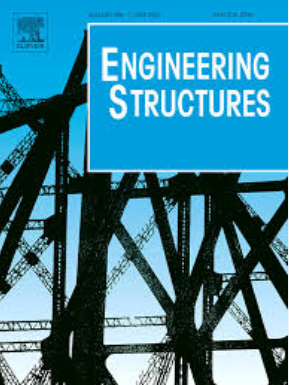A 1DCNN-SENet-LSTM model for UGW-based automatic evaluation of grouting void location in post-tensioned concrete structure
IF 5.6
1区 工程技术
Q1 ENGINEERING, CIVIL
引用次数: 0
Abstract
Void is a common grouting defect that significantly impacts the safety and durability of post-tensioned concrete structures. However, due to invisibility, it is challenging to detect and evaluate grouting voids. This study proposes a one-dimensional convolutional neural network-squeeze and excitation net-long short-term memory (1DCNN-SENet-LSTM) model for UGW-based automatic evaluation of grouting void location. In this model, the UGW time-domain signal is filtered and input into the network. Firstly, CNN is employed to extract spatial features. Secondly, the SE block is incorporated for attention calibration. Finally, the LSTM is utilized to extract time series-related features. The implementation of 9-fold cross-validation during network training enhances robustness and avoids overfitting. The proposed employs an end-to-end approach to facilitate automatic feature learning. This study compares the test results of the 1DCNN-SENet-LSTM model with other models to validate the superiority of the proposed model in terms of prediction performance. The classification results are evaluated using indicators such as Accuracy, Precision, Recall, and F1 score. The results indicate that the 1DCNN-SENet-LSTM model achieves a greater Accuracy of 96 % in evaluating the location of grouting voids, which is 10.3 % higher than the 1DCNN-LSTM model, 12.9 % higher than the ResNet model, and 23.1 % higher than the XGBoost model. Furthermore, the F1 score for each category in the 1DCNN-SENet-LSTM model exceeds 92 %, surpassing other models.
基于ugw的后张混凝土结构注浆空隙位置自动评估1DCNN-SENet-LSTM模型
空洞是一种常见的灌浆缺陷,严重影响后张混凝土结构的安全性和耐久性。但由于其不可见性,对注浆空洞的检测和评价具有一定的挑战性。本文提出了一种基于ugw的注浆空穴位置自动评价的一维卷积神经网络挤压激励网络长短时记忆(1DCNN-SENet-LSTM)模型。在该模型中,将UGW时域信号滤波后输入到网络中。首先,利用CNN提取空间特征。其次,引入SE块进行注意力标定;最后,利用LSTM提取时间序列相关特征。在网络训练过程中实现9倍交叉验证,增强了鲁棒性,避免了过拟合。该方法采用端到端方法实现特征的自动学习。本研究将1DCNN-SENet-LSTM模型与其他模型的测试结果进行了比较,验证了所提模型在预测性能上的优越性。分类结果使用准确度、精密度、召回率和F1分数等指标进行评估。结果表明,1DCNN-SENet-LSTM模型对注浆孔洞位置的评价精度为96 %,比1DCNN-LSTM模型高10.3 %,比ResNet模型高12.9 %,比XGBoost模型高23.1 %。此外,在1DCNN-SENet-LSTM模型中,每个类别的F1得分超过92 %,超过其他模型。
本文章由计算机程序翻译,如有差异,请以英文原文为准。
求助全文
约1分钟内获得全文
求助全文
来源期刊

Engineering Structures
工程技术-工程:土木
CiteScore
10.20
自引率
14.50%
发文量
1385
审稿时长
67 days
期刊介绍:
Engineering Structures provides a forum for a broad blend of scientific and technical papers to reflect the evolving needs of the structural engineering and structural mechanics communities. Particularly welcome are contributions dealing with applications of structural engineering and mechanics principles in all areas of technology. The journal aspires to a broad and integrated coverage of the effects of dynamic loadings and of the modelling techniques whereby the structural response to these loadings may be computed.
The scope of Engineering Structures encompasses, but is not restricted to, the following areas: infrastructure engineering; earthquake engineering; structure-fluid-soil interaction; wind engineering; fire engineering; blast engineering; structural reliability/stability; life assessment/integrity; structural health monitoring; multi-hazard engineering; structural dynamics; optimization; expert systems; experimental modelling; performance-based design; multiscale analysis; value engineering.
Topics of interest include: tall buildings; innovative structures; environmentally responsive structures; bridges; stadiums; commercial and public buildings; transmission towers; television and telecommunication masts; foldable structures; cooling towers; plates and shells; suspension structures; protective structures; smart structures; nuclear reactors; dams; pressure vessels; pipelines; tunnels.
Engineering Structures also publishes review articles, short communications and discussions, book reviews, and a diary on international events related to any aspect of structural engineering.
 求助内容:
求助内容: 应助结果提醒方式:
应助结果提醒方式:


